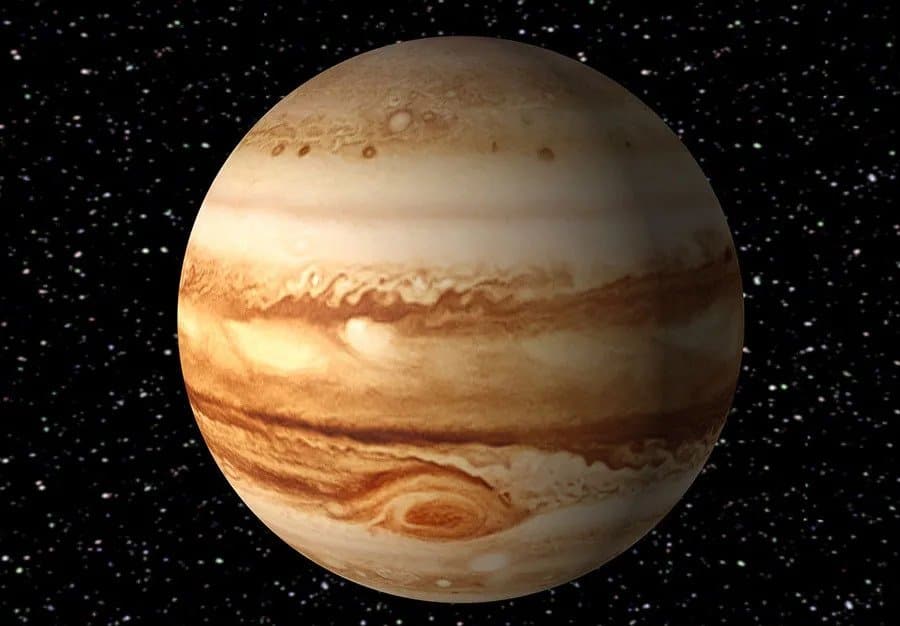206
Jupiter, the largest planet in our solar system, has some fascinating facts that you should know too
The planet Jupiter: interesting facts
There are some interesting things to know about the planet Jupiter that you may not have known before.
- With a diameter of around 140,000 kilometers, Jupiter is the largest planet in our solar system and has an impressive mass that makes it a true giant.
- It consists mainly of gases such as hydrogen and helium and has no solid surface. Instead, its gas shell gradually turns into a liquid layer, which is characterized by extreme pressures and temperatures.
- It is known for its turbulent and dynamic atmosphere, characterized by violent storms and eddies, including the famous Great Red Spot, a gigantic storm that has raged in the planet’s atmosphere for centuries.
- Its atmosphere is rich in various chemical compounds, which are responsible for the colorful diversity of its cloud formations and give it its characteristic appearance.
- Jupiter has a strong magnetic field, which is about 14 times stronger than that of the Earth and protects it from the harmful effects of the solar wind.
Its moons and rings
In addition to its imposing appearance, Jupiter also has a large number of moons and even a ring, which make it even more special.
- Jupiter is orbited by at least 79 known moons, including the four largest and best known: Io, Europa, Ganymede and Callisto, which are known as Galilean moons and have a wealth of geologic features.
- Jupiter’s moons show a variety of geologic features, including volcanoes, geysers, ice sheets and possibly even subsurface oceans that could support life.
- Jupiter does not have a conspicuous ring system like Saturn, but a faint ring veil has been discovered around the planet, consisting of dust particles that could originate from Jupiter’s moons.
- Jupiter’s moons and rings offer scientists important insights into the formation and evolution of the solar system and provide knowledge about the cosmic processes that lead to the formation of planets and moons.
- Space probes such as the Voyager missions and the Juno probe have explored Jupiter up close, collecting valuable data and images that deepen our understanding of this fascinating planet.
